Research - (2022) Volume 12, Issue 6
Microbiological quality of water in an urban wetland: Lake Echatt (wilaya of El-Oued, Algerian Sahara)
I.E. Saker1, A. Baaloudj2*, H. Rizi3, L. Bouaguel1,2, A. Bouakkaz2,4, S. Laabed1, A. Kannat2,5, I. Houhamdi2, S. Seddik1 and M. Houhamdi2Abstract
Regular monitoring of microbial density of Lake Echatt (Wilaya of El-Oued, Algerian Sahara) during the period from September 2019 to August 2020 revealed, on the one hand, a very abundant increase in the number (total germs, total coliforms, and fecal streptococci) during the hottest months (May, June, July, and August), probably due to the rise in temperatures reaching the optimal conditions for the growth of microorganisms. On the other hand, this water is very polluted presenting a very high fecal contamination index following direct discharges and without prior treatment of wastewater (rich in nitrates) from neighboring dwellings, mainly in site 1, which overloads this ecosystem through water renewal. At the level of these waters proliferate pathogenic bacteria (Salmonella, Shigella, Pseudomonas, and Staphylococcus) which can cause serious illnesses.
Keywords
Urban wetland, Water microbiology, Contamination index, Coliforms, Sahara, Algeria.
Introduction
Each natural environment is characterized by a specific microflora that contributes to the cycles of matter by transforming organic matter into very simple and easily assimilated mineral elements such as nitrogen, carbon, Sulphur, etc. which will be used by other organisms and/or participate in other metabolisms (Sakai et al., 2000, Liu et al., 2003, Mezbour et al., 2018; Hamli et al., 2019). All of these processes by which the aquatic environment ensures the mineralization of the organic substances discharged constitute the phenomenon of self-purification. In lakes, the self-purifying heterotrophic microflora is largely made up of aerobic and facultative anaerobic bacteria which are essentially Gram (-) rods and Gram (+) cocci composed mainly of Pseudomonadaceae (40%), Acinetobacter (23%), Enterobacteriaceae (10%), Bacillaceae (06%) and Chromobacterium (03%) (Gomez 1998, Rejsek 2002, Kazi et al., 2009, Toumi et al., 2016, Reggam et al., 2017).
In aerobic and very oxygen-rich environments, organic matter follows more or less complete mineralization leading to non-harmful and non-toxic compounds such as CO2, nitrates, phosphates, etc. On the other hand, in non-oxygenated environments, the development of optional anaerobes leads to the degradation of organic compounds up to the stage of production of compounds such as methane, hydrogen sulfide , mercaptans (Dussart 1996, Gomez 1998, Toumi et al. al., 2016, Reggam et al., 2017, Hamli et al., 2019), the majority of which are sources of nuisance, toxicity and bad odors (Perona et al., 1999, Liu et al., 2003, Hamli et al., 2019). Under conditions of high organic loads and due to the increased use of dissolved oxygen by aerobic organisms, anaerobic microorganisms develop in a very troublesome way, which favors the accumulation and development of Chlorophyceae (flora algae) (Bermond and Vuichaard, 1973, Liu et al., 2003, Reggam 2015).
Site description
Lac Echatt is an urban dune depression located in the northern part of the city of El-Oued just near the university. It is made up of two bodies of water (site 1 and site 2) separated by a road and it receives continuous wastewater from this city and occupies a total area of 150ha (Fig. 1 and. 2). Its depth varies between 0.5 and 0.9 m and it hosts an exemplary avian diversity far exceeding 50 species, the most important of which are the Anatidae (marbled teal Marmaronetta angustirostris, scaup nyroca Aythya nyroca, northern shovelers Spatula clypeata, pintails Anas acuta), Phaneropterid (the Greater Flamingo Phoenicopterus roseus), Rallidae (the Eurasian Coot Fulica atra and the Moorhen Gallinula chloropus), Sandpipers, Plovers and Sandpipers (Personal observations). The site was recently cut into two bodies of water following the construction of a road (Fig. 1). The vegetation bordering the two bodies of water is composed mainly of halophiles plants, the most important of which are the Zygophyllaceae represented by Zygophyllum cornutum), the Amaranthaceae (Salsola vermiculata and Salicornia fruticose ) , and tufts of Tamarix gallica observed especially in the plan of northern water and play a role in the maintenance of aquatic avifauna.
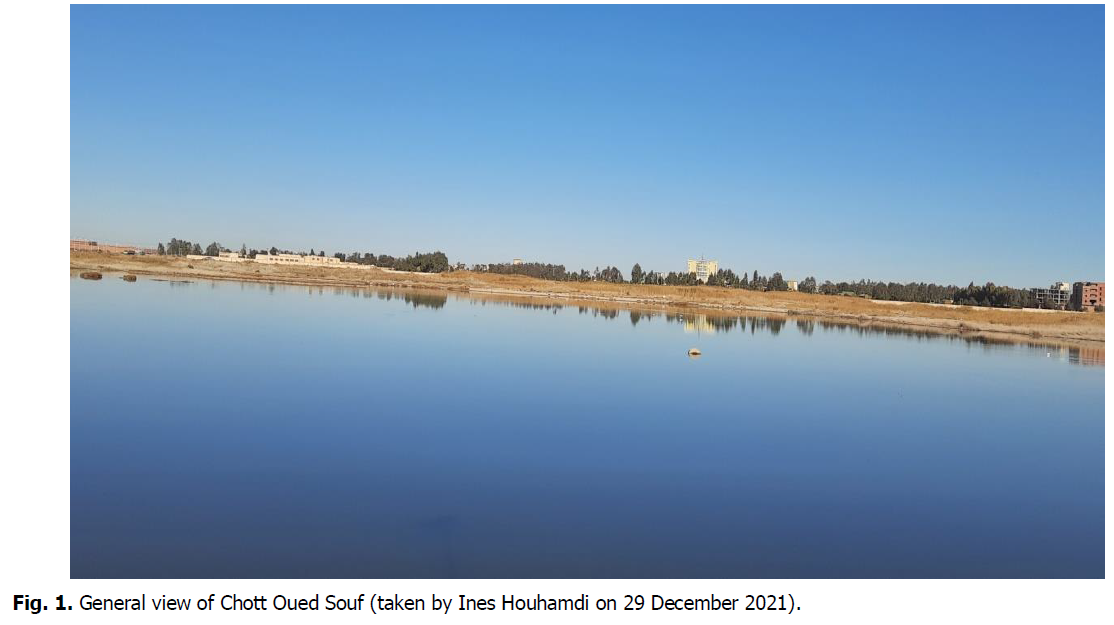
Fig 1: General view of Chott Oued Souf (taken by Ines Houhamdi on 29 December 2021).
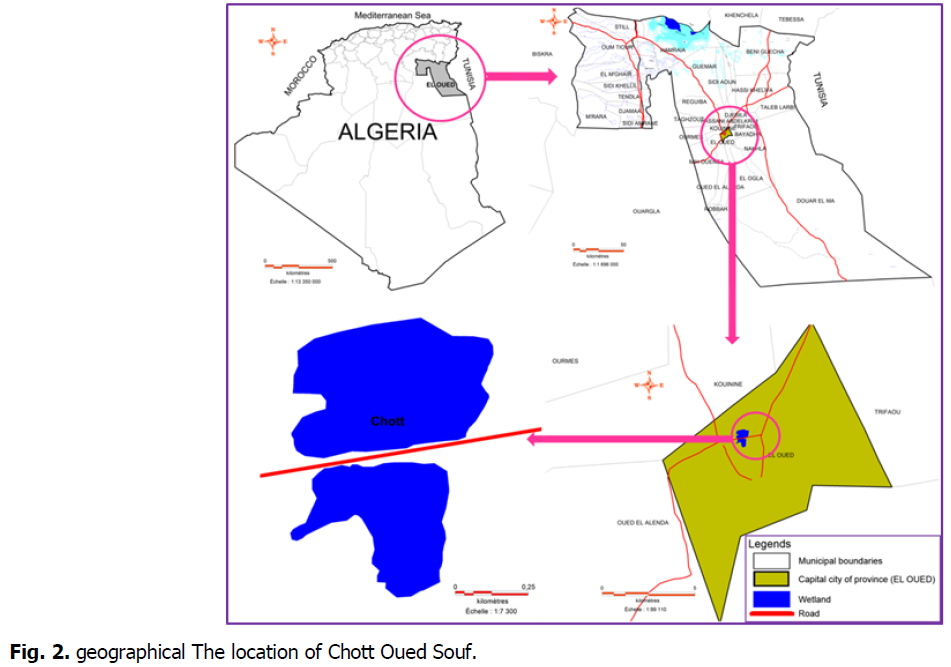
Fig 2: geograhhical the location of Chott Oued Souf.
Materials and Methods
To determine the microbiological quality of the water of Lake Echatt (wilaya of El-Oued, Algerian Sahara) which continuously receives discharges from the city of El-Oued, we carried out monthly monitoring during the period from September 2019 to August 2020 with one direct debit per month. Thus, 12 water samples were collected at a depth of 15 to 30 cm from the water surface while avoiding air penetration (Rodier et al., 1996, Perona et al., 1999, Houhamdi et al., 2006, Reggam et al., 2015, 2017, Mezbour et al., 2018). These samples for bacteriological analysis were taken in 0.33 liter Pyrex glass bottles with a metal screw cap. The transport of these samples from the sampling points to the laboratory was ensured in a cooler at 4°C (Meybeck et al., 1996, Razkallah 2019). The analyzes were carried out at the Biology, Water and Environment laboratory (LBEE, University 8 May 1945 Guelma Total coliforms, fecal coliforms and fecal streptococci or Lancfeild group D streptococci were quantified using the MPN (Most Probable Number) technique (Rodier et al., 1984, Saheb et al., 2009). We also carried out systematic searches for all bacterial species (Gram-positive and/or negative) in these waters. The identifications were carried out by API systems (Rejsek, 2002, Saheb et al., 2009, Reggam, 2015, Hamli et al., 2019).
Results
The evolution of the numbers of total germs counted in the two lakes of Lake Echatt shows us a gradual increase from the first month of sampling (September 2019) until the last (August 2020). Thus, the more the temperature increases, the more the number of total germs increases (Fig. 3). The maximum count is around 390,000 germs/ml.
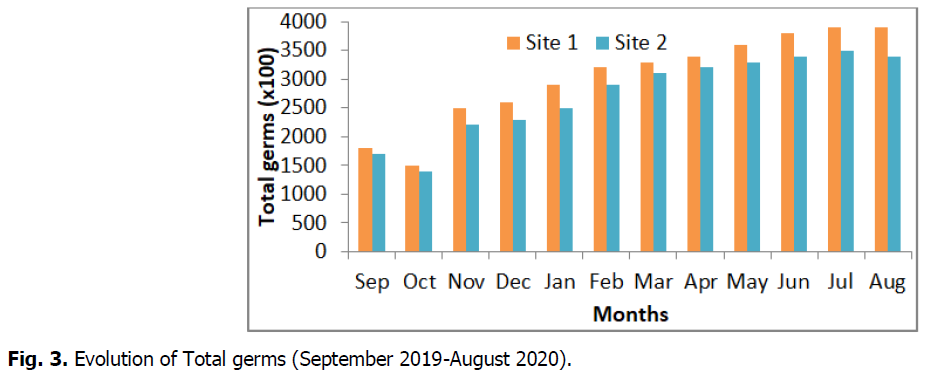
Fig 3: Evolution of Total germs (September 2019-August 2020).
The graphs of total coliforms and fecal coliforms follow the same evolution as those of total germs (Fig. 4, Fig. 5). The highest densities were recorded during the summer period. These microorganisms capable of degrading lactose in different media are more or less undemanding. They proliferate easily in aquatic environments and indicate continued fecal pollution (Chapman and Kimstach, 1996, Toumi et al., 2016, Reggam et al., 2017, Mezbour et al., 2018, Hamli et al., 2019).
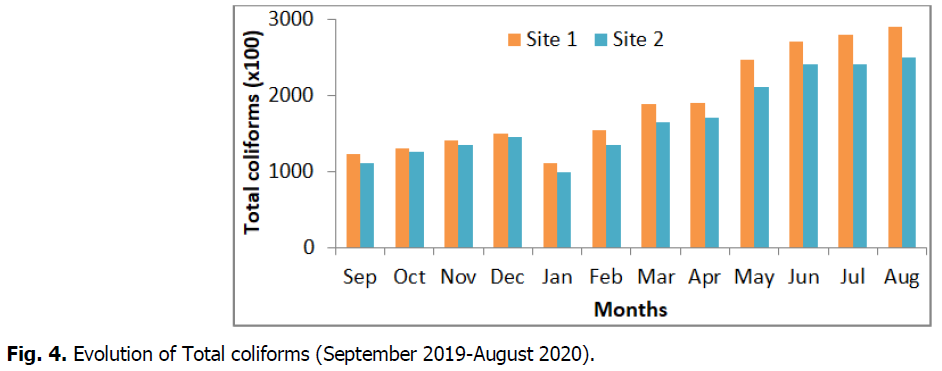
Fig 4: Evolution of Total coliforms (September 2019-August 2020).
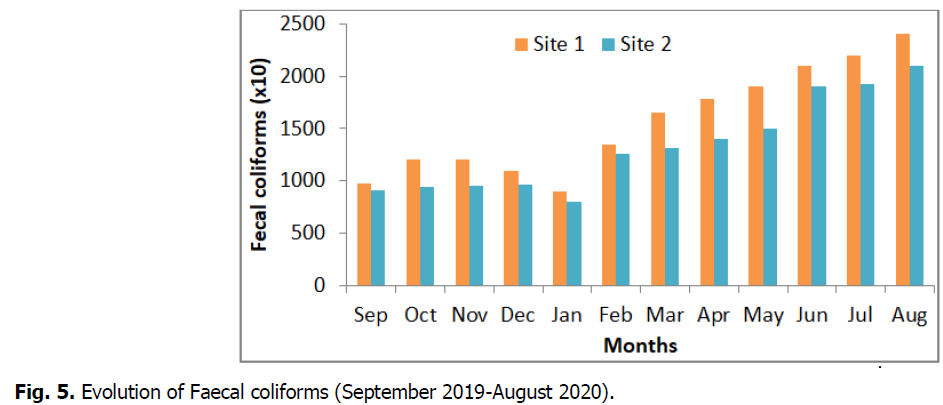
Fig 5: Evolution of Faecal coliforms (September 2019-August 2020).
The presence of fecal streptococci in an environment indicates recent contamination of the environment because these microorganisms live strictly in the gastrointestinal tract of animals and cannot resist external environments (Carluer et al., 1996, Toumi et al., 2016, Mezbour et al., 2018, Hamli et al., 2019). The rates recorded are quite high and indicate that these environments are continuously polluted. The maximum values were recorded during July, the hottest month (Fig.6) while the minimums were observed during the coldest months of the year (December, January , and February).

Fig 6: Evolution of Faecal Streptococci (September 2019-August 2020).
La recherche des bactéries dans ces deux plans d’eau du Lac Echatt, nous a permis d’isoler 48 espèces bactéries dont 37 sont des bactéries à Gram (-) et appartiennent à 3 familles (les Enterobacteriaceae, les Vibionaceae et les Pseudomonadaceae) et les 11 espèces sont Gram (+) et appartiennent à deux familles: les Staphylococcaceae et les Streptococcaceae (Table 1). Certaines espèces de ces bactéries sont pathogènes et peuvent provoquer des maladies pour l’homme et les animaux (Toumi et al., 2016, Reggam et al., 2017, Hamli et al., 2019). La famille la plus représentée est celle des Enterobacteriaceae qui compte 26 espèces dont deux sont extrêmement pathogènes (Salmonella enterica, Staphylococcus aureus et Shigella dysenteriae). Ces derniers avec Pseudomonas aeruginosa sont responsables de maladies graves pouvant aller des fièvres typhoïdes et des dysenterie bacillaires aux problèmes des intoxications graves suite à la multi-résistance de ces microorganismes (Dussart 1996, Carluer et al.,1996, Perona et al., 1999, Debieche 2002, Liu et al., 2003).
| Familles | Site 1 | Site 2 | |
|---|---|---|---|
| Gram (-) | Enterobacteriaceae | Escherich a coli | Escherichia coli |
| Escherichia gastrica | Escherichia gastrica | ||
| Escherichia noctuarii | Escherichia oxytocus | ||
| Escherichia oxytocus | Escherichia anata | ||
| Escherichia vesiculosus | Proteus vulgaris | ||
| Escherichia anata | Proteus mirabilis | ||
| Escherichia aurescens | Proteus faecis | ||
| Proteus vulgaris | Morganella morgani | ||
| Proteus mirabilis | Providencia alcalifaciens | ||
| Proteus faecis | Providencia rettgeri Klebseilla oxytoca Enterobacter cloacae | ||
| Morganella morgani | Citrobacter freundi | ||
| Providencia alcalifaciens | Hafnia sp. | ||
| Providencia rettgeri Klebseilla oxytoca Klebseilla. pneumoniae | Erwinia amylovora | ||
| Enterobacter cloacae | Pantoea dispersa | ||
| Enterobacter agglomerans | Pantoea stewartii | ||
| Citrobacter freundi | Salmonella enterica | ||
| Citrobacter sp | Shigella dysenteriae | ||
| Hafnia sp. | |||
| Erwinia amylovora | |||
| Pantoea dispersa | |||
| Pantoea punctata | |||
| Pantoea stewartii | |||
| Salmonella enterica | |||
| Shigella dysenteriae | |||
| Vibionaceae | Vibrio parahæmolyticus | Vibrio marinus | |
| Vibrio furnisii | Vibrio metschnikovii | ||
| Vibrio marinus | Vibrio natriegens | ||
| Vibrio metschnikovii | Plesiomonas shigelloides | ||
| Vibrio natriegens | Aeromonas sp. | ||
| Plesiomonas shigelloides | |||
| Aeromonas sp. | |||
| Pseudomonadaceae | Pseudomonas aeruginosa | Pseudomonas aeruginosa | |
| Pseudomonas fluorescens | Pseudomonas fluorescens | ||
| Pseudomonas putida | Pseudomonas flavescens | ||
| Pseudomonas flavescens | |||
| Staphylococcaceae | Staphylococcus aureus | Staphylococcus aureus | |
| Staphylococcus epidermidis | Staphylococcus epidermidis | ||
| Staphylococcus intermedium | Staphylococcus intermedium | ||
| Staphylococcus saprophyticus | Staphylococcus saprophyticus | ||
| Staphylococcus pseudintermedius | Staphylococcus pseudintermedius | ||
| Gram (+) | Streptococcaceae | Streptococcus salivarius | Streptococcus mitis |
| Streptococcus mitis | Lactococcus fujiensis | ||
| Lactococcus fujiensis | Lactococcus garvieae | ||
| Lactococcus garvieae |
Table 1. List of bacteria isolated in the two water bodies of Lake Schatt.
Discussion
The microbiological analysis of the water from this urban wetland in the Algerian Sahara has shown that this water is very polluted and the bacterial load is very high. Thus, this hydro system located near homes and which directly receives various sewers from the city shows an increase in the numbers of total germs, coliforms , fecal coliforms , and fecal streptococci throughout the study. These sewers clear the northern sector of the city of El-Oued of liquid domestic waste towards this lake increasing the organic load of the sectors receiving these discharges. Thus, these regions are very charged with large concentrations of organic compounds and microelements such as nitrates, nitrites, sulfates, and methanol which can constitute considerable sources of energy, nitrogen , and phosphorus for microorganisms. aquatic organisms and promotes their proliferation and rapid multiplication in this water. From another angle and during periods of low water, under the high temperatures of summer, we notice the accumulation of certain very pathogenic bacteria such as Salmonella, Shigella , Pseudomonas , and Staphylococcus pyogenes. We also note that the fecal contamination index, represented by the search for Lancfeild group D streptococci, is always high. The latter indicating recent contamination proves that this wetland is polluted throughout the year.
The north-eastern regions of this site with a sandy substrate are home to a belt of more or less dense vegetation, composed mainly of Tamarix gallica and nitratophilic plants, which also promote increased growth of microorganisms in the lake. It is probably due to the accumulation of organic matter near this vegetation caused by leaf fall and the runoff of terrigenous bacteria towards the center of the body of water. The accumulation of waste and plant debris promotes the multiplication and growth of scavengers and enriches the mineralization of the water. The presence of germs such as staphylococci; Pseudomonas, Shigella, and Salmonella in this water is also explained by the presence of large concentrations of organic matter of animal origin (defections of very numerous water birds) decomposing with more or less high aeration (Toumi et al., 2016, Mezbour et al., 2018, Razkallah 2019). It should be noted that the majority of the microorganisms encountered are mainly made up of aerobic and facultative anaerobic bacteria which have the ability and the characteristic of reducing organic compounds to the stage of total mineralization. This increase in the availability of minerals in these regions is also a precursor and herald of plant development (Reggam et al., 2015, 2017).
It should be noted that this vegetation consists essentially of Tamarix and Chenopodiadae whose seeds are highly appreciated by many species of water birds, mainly the Anatidae and the Fulica atra coot as well as certain Anatidae (Houhamdi, 2002; Bouali, 2021). They are also habitats for wintering and passing waterbirds. These waters with their shallow depths , therefore, constitute one or a phase of transition between this wetland and the outer parts because they dry up almost 50% during the summer when these summer temperatures often exceed 44°C. They are rich in waterbird droppings, microalgae , and decomposing organic matter (leaves and twigs), which constitute a favorable environment for the development of microorganisms, which find large concentrations of sources of carbon, phosphorus , and nitrogen (Gomez, 1998). Bacterial growth is increased throughout the year and especially during dry periods. The evaporation of the lake water is at the origin of the accumulation of large concentrations of organic matter in these regions, which facilitates their degradation. In some sectors , the presence of pathogenic germs is recorded throughout the year.
Conclusion
The Spatio-temporal monitoring of the counts of microorganism’s indicators of the biological pollution of the waters of Lake Echatt (wilaya of El-Oued) provided us with the image of relatively intense pollution which results in a significant microbial and organic load of the two bodies of water that make up this urban wetland. As evidenced by the high levels and concentrations of bacteria measured (total germs, total and fecal coliforms , and fecal streptococci) at all stations and throughout the study period (from September 2019 to August 2020). In general, the rates measured in this hydro system evolve gradually overtime to reach maximum levels during the summer period. It is dependent on the large quantity of domestic wastewater and the high volumes of industrial effluents discharged into this environment without treatment. It is also important to point out the presence of 48 bacterial species in this ecosystem, some of which constitute real public health threats for humans and animals frequenting this wetland. As a result, we recommend developing means of combating this pollution by installing means of prior and adequate treatment of all discharges and by insisting on raising awareness among residents and the entire local population.
Acknowledgments
Our sincere thanks to the MESRS and the DGRSDT for their help and support and to the entire team of the LBEE laboratory (University 8 May 1945 Guelma) who graciously provided us with the equipment and reagents to carry out our experiments.
References
Brémond, R., Vuichard, R. (1973). Paramètres de la qualité des eaux. Ministère de la protection de la nature et de l'environnement, Secrétariat permanent pour l'étude des problèmes de l'eau.
Bouali, N., Baaloudj, A., Touarfia, M., Houhamdi, I., Maazi, M.C., Houhamdi, M. (2021). Ecology, phenology and wintering behavior of Anatidae in the wetlands of Souk–Ahras (north–eastern Algeria). Arxius de Miscel. lània Zoològica, 19:135-149.
Carluer, N., Gouy, V., Gril, J.J. (1996). Contamination des eaux de surface par produits phytosanitaires et modélisation. Ingénieries eau-agriculture-territoires, 6:19.
Chapman, D., Kimstach, V. (1996). Selection of water quality variables. Water quality assessments: a guide to the use of biota, sediments, and water in environmental monitoring. (Chapman edn), E and FN Spon, London.
Debieche, T. (2002). Évolution de la qualité des eaux (salinité, azote et métaux lourds) sous l’effet de la pollution saline, agricole et industrielle: Application à la basse plaine de la Seybouse -Nord-Est Algérien. Thèse de doctorat. Université Franche-Comté, p:200.
Dussart, B. (1996). Limnologie: Etude des eaux continentales. Gauthier-Villars. Edition: Paris, p:245.
Gómez, N. (1998). Use of epipelic diatoms for evaluation of water quality in the Matanza-Riachuelo (Argentina), a pampean plain river. Water Research, 32:2029-2034.
Hamli, A., Reggam, A., Maazi, M.C., Houhamdi, M. (2019). Physicochemical quality of water of the urban pond of Tamlouka (north-east of Algeria). Pollution Research, 38:528-535.
Houhamdi, M. (2002). Ecologie des peuplements aviens du Lac des Oiseaux (Numidie orientale). PhD, Badji Mokhtar University, Annaba, Algeria.
Houhamdi, M., Mebarki, C., Abbaci, S. (2006). Qualité microbiologique et physico-chimique des eaux des puits et des sources de la région d’Oum-El-Bouaghi. Journal Algérien Sur les Régions Arides, pp:105-108.
Kazi, T.G., Arain, M.B., Jamali, M.K., Jalbani, N., Afridi, H.I., Sarfraz, R.A., Shah, A.Q. (2009). Assessment of water quality of polluted lake using multivariate statistical techniques: A case study. Ecotoxicology and Environmental Safety, 72:301-309.
Liu, C.W., Lin, K.H., Kuo, Y.M. (2003). Application of factor analysis in the assessment of groundwater quality in a blackfoot disease area in Taiwan. Science of the Total Environment, 313:77-89.
Google Scholar, Crossref, Indexed at
Meybeck, M., Friedrich, G., Thomas, R., Chapman, D. (1996). Rivers. Water quality assessments: a guide to the use of biota, sediments, and water in environmental monitoring, Chapman Edition, E and FN Spon, London, p:273.
Mezbour, R., Reggam, A., Maazi, M.C., Houhamdi, M. (2018). Evaluation of organic pollution index and the bacteriological quality of the water of the Lake of birds (ELTarf East-Algerian). Journal of Materials and Environmental Sciences, 9:971-979.
Perona, E., Bonilla, I., Mateo, P. (1999). Spatial and temporal changes in water quality in a Spanish river. Science of the Total Environment, 241:75-90.
Razkallah, Z. (2019). Contribution à l’étude de la qualité bactériologique et physico-chimique de l’eau de l’Oued Seybouse et inventaire de l’odonatofaune (Guelma, Nord-Est de l’Algérie). Thèse de doctorat. Université d’El-Tarf, p:136.
Reggam, A. (2015). Contribution à l’étude de la qualité microbiologique et physico-chimique de l’eau de l’Oued Seybouse (Guelma, Algérie). Thèse de Doctorat. Université 8 Mai 1945, Guelma, p:143.
Reggam, A., Bouchelaghem, H., Houhamdi, M. (2015). Qualité physico-chimique des eaux de l’Oued Seybouse (Nord-Est de l’Algérie): caractérisation et analyse en composantes principales. Journal of Materials and Environmental Science, 6:1417-1425.
Reggam, A., Bouchelaghem, E.H., Hanane, S., Houhamdi, M. (2017). Effects of anthropogenic activities on the quality of surface water of Seybouse River (northeast of the Algeria). Arabian Journal of Geosciences, 10:1-7.
Google Scholar, Crossref, Indexed at
Rejsek, F. (2002). Analyse des eaux, Aspects réglementaires et techniques. Sérvice Science Technology and Environment, p:360.
Rodier, J., Bazin, C., Broutin, JP., Chambon, P., Champsaur, H., Rodi, L. (1996). L’analyse de l’eau, 8éme édition. Dunod, Paris, p:1383.
Rodier, J., Legube, B., Merlet, N. (1984). L’analyse de l’eau. 7eme édition. Paris, France.
Menouar, S., Anissa, Z., Boualem, M., Chahinez, M., Moussa, H. (2009). Contribution à l'étude de la gestion des déchets solides d'activité de soins de la ville d'Ain-Beida (Wilaya d'Oum El-Bouaghi). Algérie. MHA (Sousse), 21:69-76.
Sakai, H., Iiyama, S., Toko, K. (2000). Evaluation of water quality and pollution using multichannel sensors. Sensors and Actuators B: Chemical, 66:251-255.
Toumi, A., Reggam, A., Alayat, H., Houhamdi, M. (2016). Caractérisation physico-chimique des eaux de l’écosystème lacustre : cas du Lac des Oiseaux (Extrême NE algérien). Journal of Materials and Environmental Sciences, 7:139-147.
Author Info
I.E. Saker1, A. Baaloudj2*, H. Rizi3, L. Bouaguel1,2, A. Bouakkaz2,4, S. Laabed1, A. Kannat2,5, I. Houhamdi2, S. Seddik1 and M. Houhamdi22Laboratoire Biology, Eau et Environnement (LBEE), Faculty SNV-STU, Uniersityv 8 May 1945 Guelma, PB, 401 24000 Guelma, Algeria
3Department of Biology, Faculty of Sciences and Nature, University Chadli Bendjedid d’El-Tarf, 36000, Algeria
4Department of Biology, Faculty of Sciences and Nature, University Abbes Laghrour, Khenchela, 40000, Algeria
5Forest Conservation of Guelma, 24000, Algeria
Citation: Saker, I.E., Baaloudj, A., Rizi, H., Bouaguel, L., Bouakkaz, A., Laabed, S., Kannat, A., Houhamdi, I. Seddik, S., Houhamdi,M. (2022). Microbiological quality of water in an urban wetland: Lake Echatt (wilaya of El-Oued, Algerian Sahara). Ukrainian Journal of Ecology. 12:39-46.
Received: 25-Jun-2022, Manuscript No. UJE-22-67677; , Pre QC No. P-67677; Editor assigned: 27-Jun-2022, Pre QC No. P-67677; Reviewed: 08-Jul-2022, QC No. Q-67677; Revised: 14-Jul-2022, Manuscript No. R-67677; Published: 20-Jul-2022, DOI: 10.15421/2022_383
Copyright: This is an open access article distributed under the terms of the Creative Commons Attribution License, which permits unrestricted use, distribution, and reproduction in any medium, provided the original work is properly cited.
